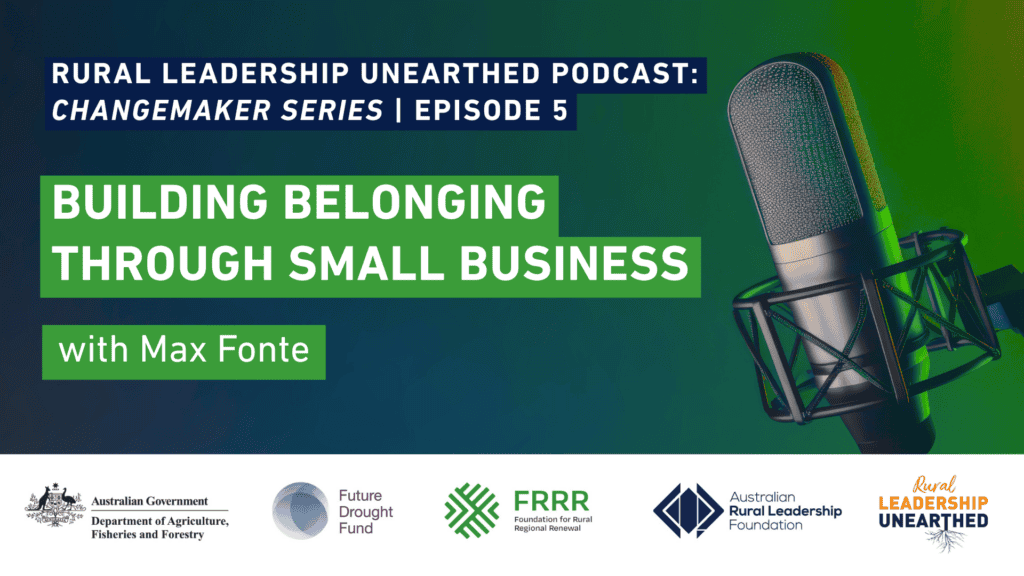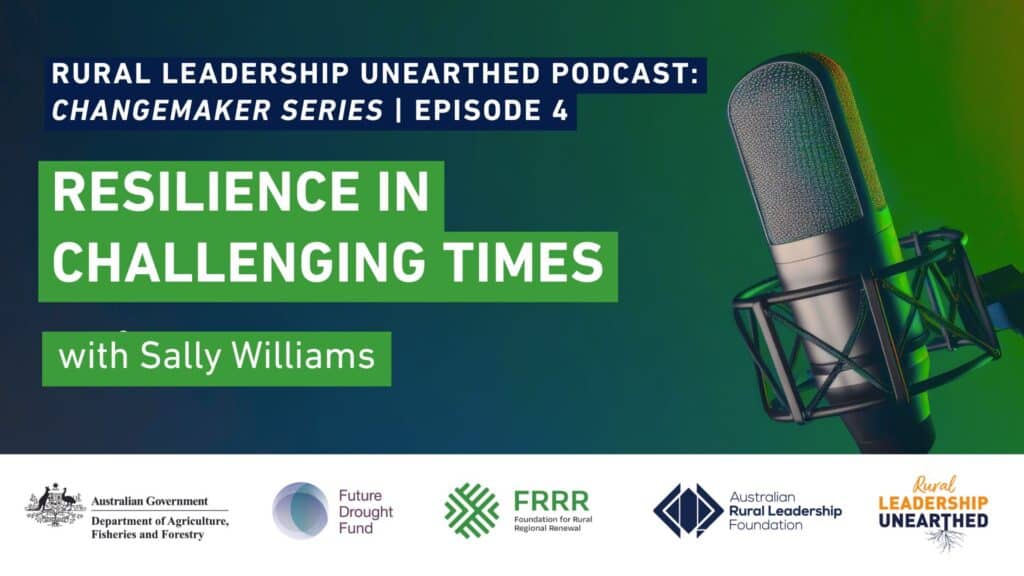What does leadership look like when it’s not about authority, influence or the spotlight? When it’s not driven by personal success but by a greater good? At the Australian Rural Leadership Foundation, we talk a lot about leadership as a practice – something lived, shared and grown through action. But more and more, I’ve been thinking about leadership as an act of service.
Two things sparked that reflection
One was the launch of the Bruce Simpson Scholarship over the weekend – an incredible perpetual fund established by Bruce’s family as a lasting legacy to support the participant of an agricultural leader in the NSW Riverina (and beyond) to take part in the Australian Rural Leadership Program (ARLP).
The other example is the Territory Connect Scholarship, driven by ARLP alum Donna Digby. Donna, along with a committed group of supporters, is once again taking on the Larapinta Trail to raise funds for a leader from the Northern Territory to take part in the program.
Both are reminders that leadership isn’t about being in charge. It’s about showing up, lifting others, and asking, *”How can I help?”. More on that later.
Understanding servant leadership
The idea of servant leadership might not be familiar to everyone, but it’s a concept worth revisiting, especially now. The theory was introduced by Robert K. Greenleaf in 1970 in his essay The Servant as Leader. In it, Greenleaf wrote:
“The servant-leader is servant first. It begins with the natural feeling that one wants to serve. Then conscious choice brings one to aspire to lead.”
In other words, great servant leaders don’t start with ambition or authority. They start with a deep desire to help others. From that place, leadership grows.
This style of leadership puts people first. It encourages ownership and extends trust. It’s about creating the conditions where others can thrive whether that’s a team, an organisation or an entire community.
Greenleaf’s theory drew inspiration from Hermann Hesse’s story Journey to the East. In it, a man named Leo serves a group on a journey cooking, cleaning, lifting spirits. When Leo disappears, the group falls into chaos. Later, they discover Leo wasn’t just a helper. He was the guiding force behind the entire journey.
Hesse writes, “There he discovers that Leo, whom he had known first as servant, was in fact the titular head of the Order, its guiding spirit, a great and noble leader.”
That story still resonates. It reminds us that true leadership doesn’t need the spotlight. It asks, “what can I offer in order for you to succeed?”
Greenleaf went further, by asking “Do those served grow as persons? Do they, while being served, become healthier, wiser, freer, more autonomous, more likely themselves to become servants?“
Who is the servant-leader?
In the essay, Greenleaf also made a powerful distinction between two types of leaders. The “leader-first” and the “servant-first.”
The servant-leader starts with a desire to serve. The decision to lead comes later, once that purpose is clear. The leader-first, on the other hand, begins with the desire to be in charge. Their service to others may come later, if at all.
Greenleaf pointed out that these are two ends of a spectrum, with many shades in between. But the key difference shows up in how each leader cares for the needs of others.
His final question challenges us to reflect:
“And what is the effect on the least privileged in society; will they benefit, or, at least, not be further deprived?”
That’s the true test. Not status or visibility but whether our leadership helps others become stronger, more capable, and more free.
And that’s what makes leadership through service both powerful and deeply human.
Service at the core
At the ARLF, we do not subscribe to one theory of leadership but draw on many and our own experience over 33 years to inform our work. While servant leadership is not necessarily the ‘one’ answer to better leadership practice, there are strong parallels to what we believe to be true. We build leadership practice around our 6A’s framework Awareness, Authenticity, Adaptation, Action, Affiliation and Advocacy into all of our program offerings.
- Awareness recognising and understanding the needs of others
- Authenticity ensuring we lead with our own unique values and skillset
- Adaptation helping us respond with empathy and agility
- Action stepping forward to serve, not just to be seen
- Affiliation leveraging our networks to strengthens the bonds that help communities thrive.
- Advocacy giving voice to those who often go unheard.
This is what we help develop in our participants. Whether it’s through a two-day Changemaker Workshop or a 15-month journey through the ARLP, we create the space for people to explore what it means to lead beyond themselves.
Something Donna and Bruce experienced first hand.
Donna received support to undertake the ARLP from the Tim Fairfax Family Foundation, an organisation led by Tim and Gina Fairfax, who have long embodied the principles of servant leadership through their philanthropy. In her conversations with us at the ARLF, she has made it clear: she’s not aiming to pay that investment back, but to pay it forward.
The Simpson family’s story carries a similar message. A respected ARLP alum, Bruce was a quiet force for good- known for mentoring others and championing leadership in agriculture. His sudden passing in 2024 was deeply felt in the Southern Riverina and beyond. In response, his family set out to honour his legacy with purpose. They are now working to establish a $2 million perpetual scholarship fund to support future ARLP participants from the agricultural sector.
These aren’t just scholarships; in themselves they are acts of leadership that don’t ask for anything in return. They remind us that service (when done with heart) can reach far beyond the individual. It can spark the growth of others, shape communities, and strengthen entire sectors.
Leadership like this takes your breath away.
Against the tide
We live in a time when many contrary forms of leadership are on the rise globally. Neo-authoritarian leadership centred around power, control , self-interest and transactional relationships is gaining traction. It’s a stark contrast to servant leadership (you can check out my recent podcast episode with Geopolitical commentary Michael Feller on this).
There’s a real risk that in environments where performance and visibility are everything, we forget the importance of humility, empathy and service.
This makes the kind of leadership Bruce and Donna modelled all the more important. Their stories offer an antidote. They show us what’s possible when leadership is used to build, not dominate.
But there is some comfort in the knowledge that there is a sense of history repeating itself, as it always does. Even in the 1970’s Greenleaf wrote “In a time of crisis, like the leadership crisis we are now in, if too many potential builders are completely absorbed with dissecting the wrong and striving for instant perfection, then the movement so many of us want to see will be set back. The danger, perhaps, is to hear the analyst too much and the artist too little”.
What the collective “we” must do is ensure there is always space for the servant leader to continue their work and continue to help all other shades of leaders become the best versions of themselves.
A call to reflect
As you read this, I encourage you to reflect on your own leadership. Who does it serve? What would change if service became your starting point?
We need more Bruce Simpsons. We need more Donna Digbys. And we need more people willing to invest in others.
If you feel compelled to act, I encourage you to support the Bruce Simpson Scholarship or the Leadership on Larapinta walk. But more importantly, I encourage you to think about how you lead.
Because when we lead in service of others, we don’t just grow leaders. We grow communities.





